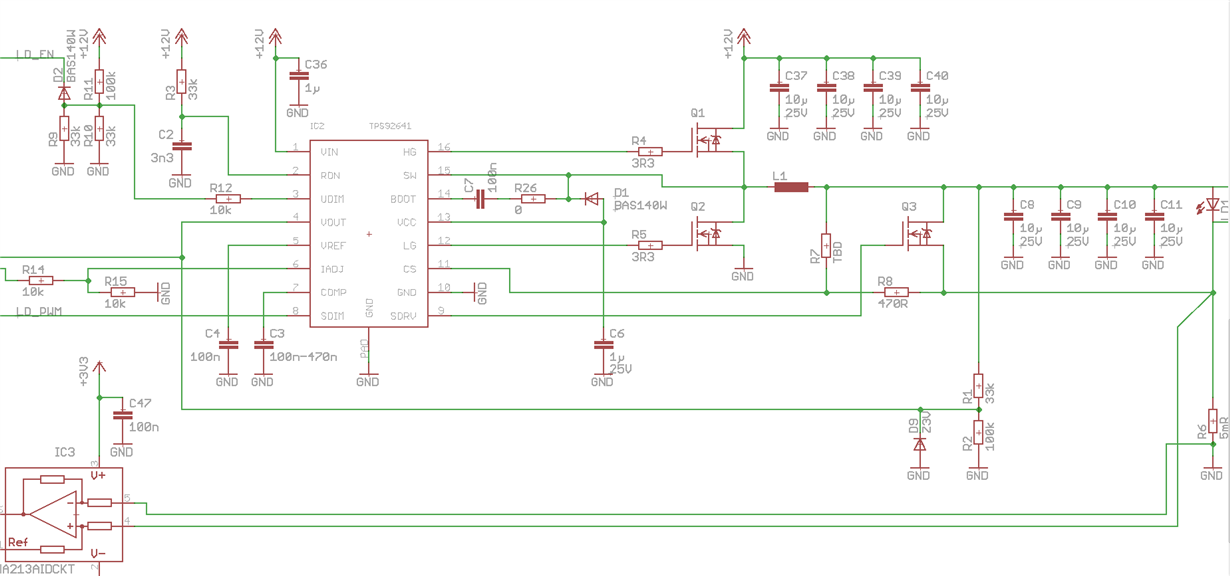Hi,
I'm trying to use the TPS92641 in led driver application. Unfortunately, my first prototype wont work properly. I tried to do the schematic and layout like in the EVU board, but with supply voltage of 12V and one single power LED as load.
The problem is the integrated 8.5V voltage regulator wont work properly. The voltage on the VCC pin is a sawtooth oscilation around 5V with 1V pk-pk and about 20kHz. This seems to be the VCC-UVLO point. Also The Ron pin is oscillating at the same frequency. The Vref voltage (not needed in my design) doesn't achieve 3V.
I tried several combinations of Ron/Con and several different COMP/VREF/VCC decoupling capacitors. The oscillating frequency is changing slightly, but the regulator wont start working. When I turn the supply voltage below UDIM UVLO threshold (UDIM<1.276V), the regulator doesn't oscillate.
The shunt FET for SDIM is not populated yet.
Thank you for your help.
P.S.: This design http://www.ti.com/lit/an/snva725/snva725.pdf


